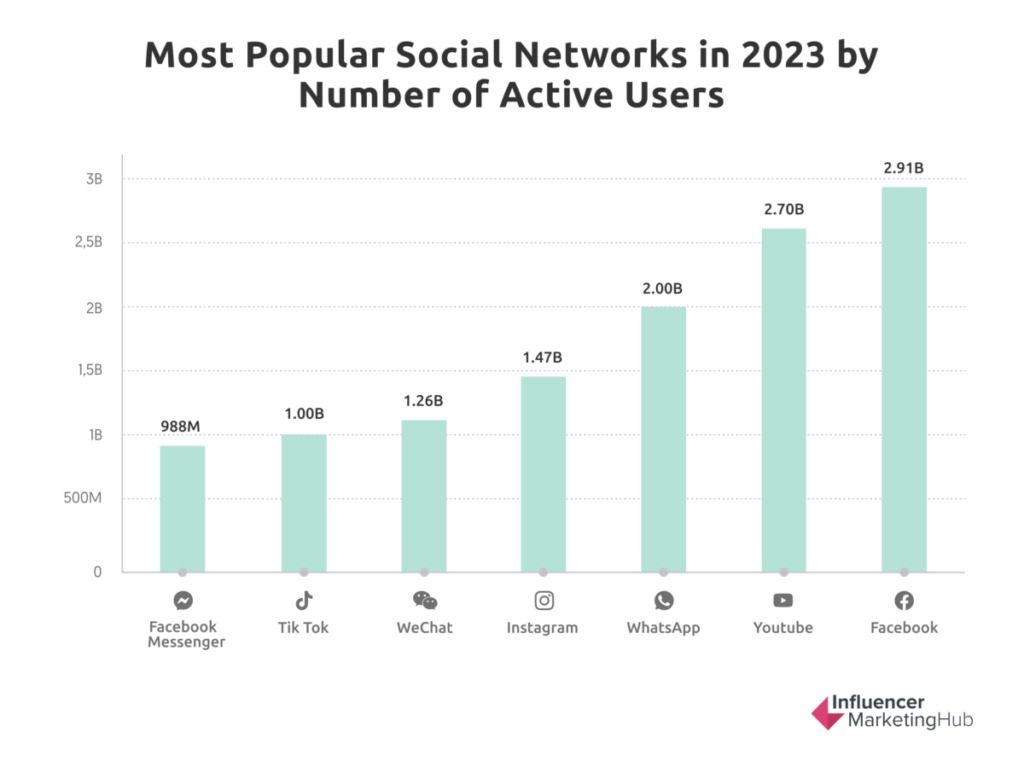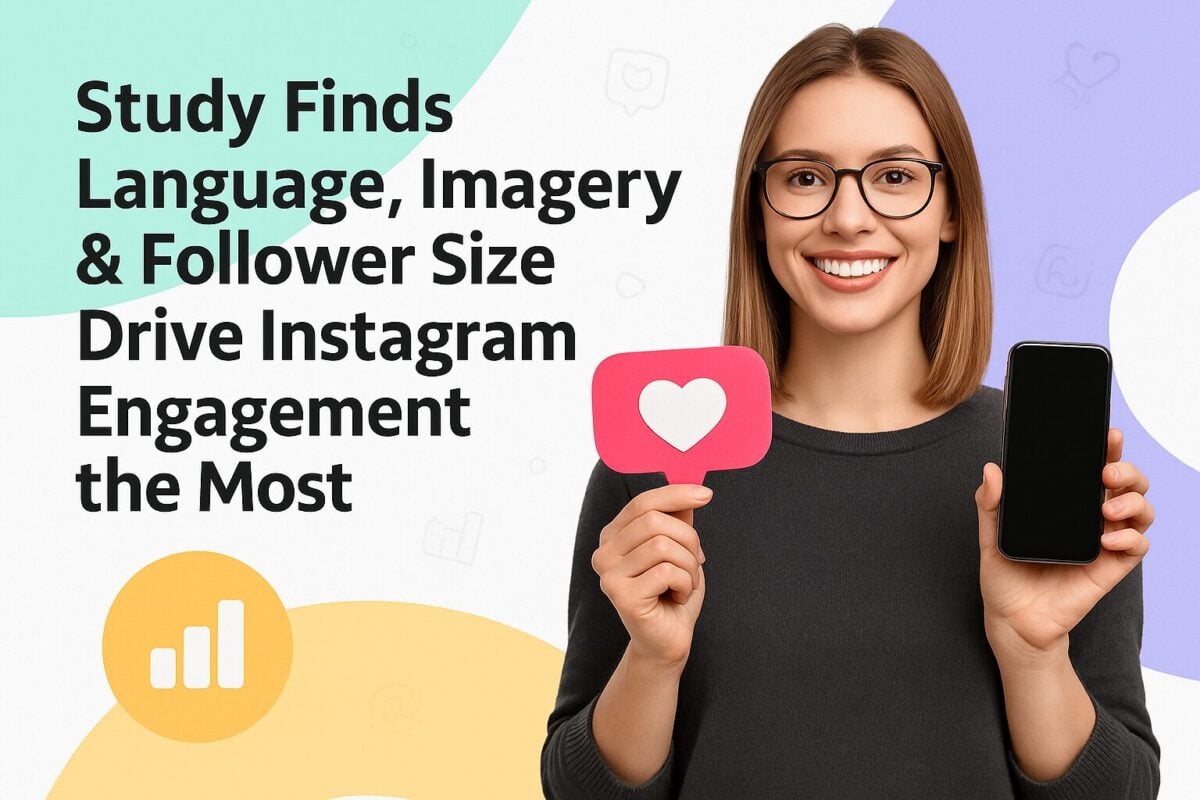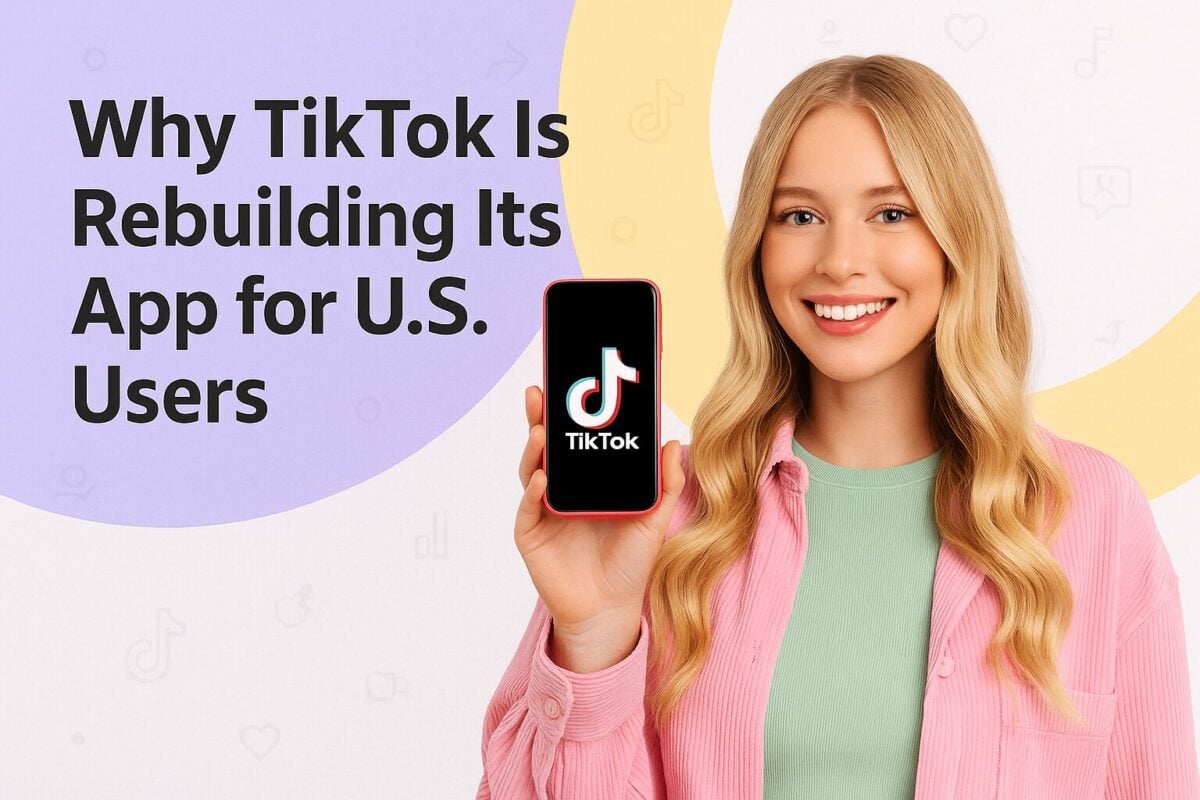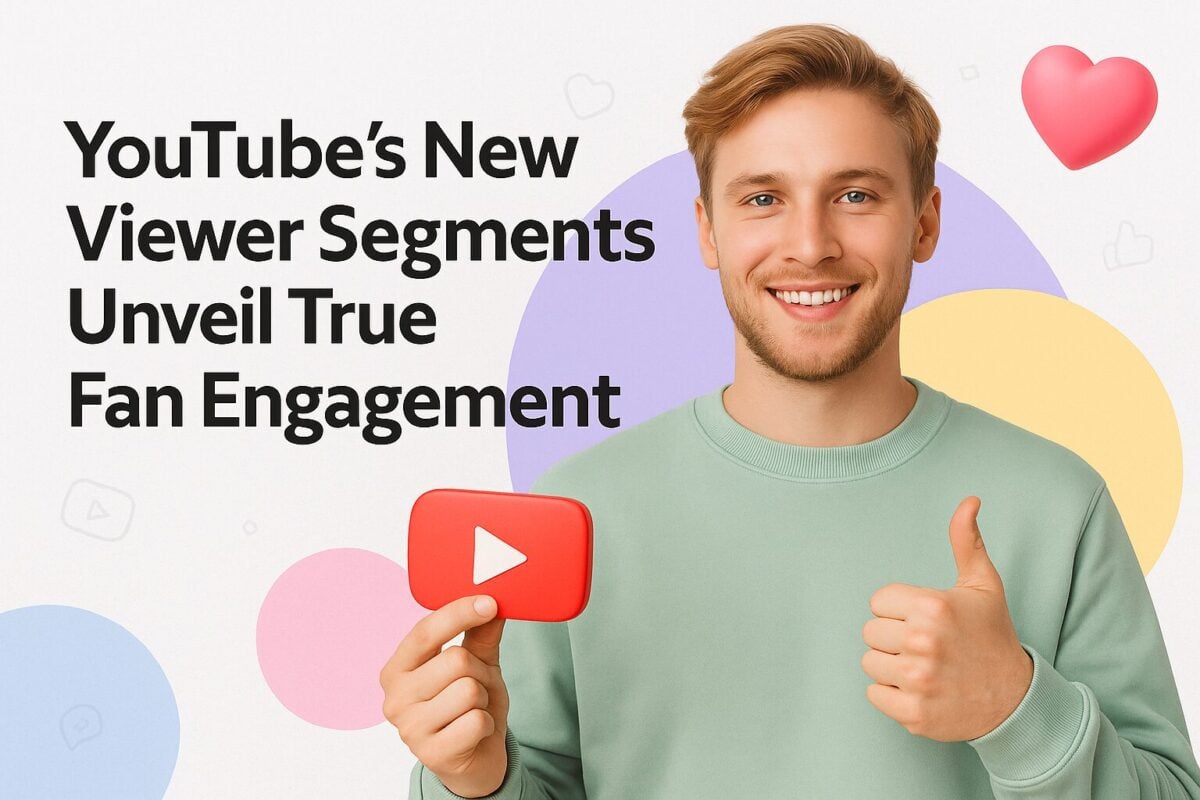Did you know that YouTube is the second-largest search engine (and second most visited website) after Google? No matter what type of video content you're looking for, chances are YouTube has it. That's why brands and entrepreneurs have flocked to the platform since its launch in 2005 to promote their products and services. But if you're an influencer or marketer who wants to increase the impact of your YouTube marketing, it's vital to understand the platform, who uses it and how, and how you can use YouTube for your own marketing success. That's why we've put together this list of YouTube statistics that are important for marketers.
By understanding the statistics on this list, you'll be better equipped to use YouTube to promote and sell your products and services—along with knowing the kind of content that works for your specific audience and how you can leverage YouTube advertising for marketing success.
66 YouTube Statistics Every Marketer Needs to Know:
66 YouTube Statistics
YouTube is part social media platform, part search engine. This makes it uniquely positioned to promote your brand and engage your audience in ways that social media platforms and search engines can't do alone. But no matter whether you're interested in starting a YouTube channel or getting more YouTube subscribers for your existing channel, you need to understand the platform and how it works. Here are the YouTube statistics you need to know to get the most of your YouTube marketing.
General YouTube Statistics
1. YouTube has more than 2.7 billion monthly active users (Global Media Insight).
2. More than 1 billion hours of YouTube content are watched every day (Comparitech).
3. 63%+ YouTube watch time is done on mobile devices (Oberlo).
4. More than 500 hours of content are uploaded to YouTube every single minute (Zippia).
5. 108 countries have a local version of YouTube (Wikipedia).
6. 62% of YouTube users visit the platform daily (Global Media Insight).
7. 75% of adults watch YouTube videos on mobile from home (Zippia).
8. YouTube is the third-largest search engine in the world (Earthweb).
9. More than one-third of mobile internet traffic comes from YouTube (Statista).
10. As of August 2022, users watch more than 180 million hoursof YouTube on TV screens (HT Tech).
11. In 2023, the average user spends 46.5 minutes on the platform each day (Oberlo).
12. As per YouTube's CPO, the recommendation algorithm is responsible for driving 70% of the viewed content on the platform. (Oxford Academic).
13. YouTube is responsible for 37% of all mobile internet traffic (Statista).
Takeaways:
YouTube has enormous reach that largely accesses content on the platform using their mobile devices. This makes it more important than ever to build a robust, mobile-first video marketing strategy for your brand. We recommend finding a YouTube influencer to collaborate with to create high-quality, engaging content your prospects can find and view on the platform to become familiar with your products and services. We also encourage you to consider YouTube ads. You can learn more about advertising on YouTube from our guide.
It's also really important to recognize that you're not alone on YouTube. Your competitors are there, too. And so are a couple billion others who create and upload 500 hours of content every minute. This muddies the waters quite a bit, making it that much harder for your prospects to find you. Take the time to create entertaining, educational, and engaging content that makes your videos and brand stand out from the pack. And, use YouTube SEO to ensure that your videos come up in the search results.
YouTube Demographics Stats
14. A striking fact reveals YouTube's undeniable supremacy in the realm of television. Insights from its internal data suggest that nearly 45% of all YouTube watching in the United States currently occurs on television screens. This marks a significant increase from the less than 30% recorded in the year 2020, as reported by individuals acquainted with this information. (The Information).
15. YouTube garners greater trust from Millennials than from any other generation(HubSpot).
16. 77% of US internet users between the ages of 15–25 use YouTube (Zippia).
17. Gen Z (56%), Millennials (54%), Gen X (48%), and even Boomers (26%), express that their primary avenue for discovering new products is YouTube (HubSpot).
18. 65% of households with annual income over $100,000 use YouTube (Statista).
19. 34.7% of US internet users aged 18–34 use YouTube (DemandSage).
20. 16.5% of US internet users aged 35–44 use YouTube (DemandSage).
21. 11.9% of US internet users aged 45–54 use YouTube (DemandSage).
22. 18.6% of US internet users aged 56+ use YouTube (DemandSage).
23. YouTube users are more likely to have kids than those who don't use the platform (Google).
24. 21.41% of YouTube traffic comes from the US (Similarweb).
25. YouTube users are more likely to have a BA degree than those who don't use the platform (SproutSocial).
26. YouTube gets an average of 11.73 pageviews per visit (SimilarWeb).
27. Only 33% of popular YouTube videos are recorded in English (YouTube).
28. In an average month, YouTube reaches 95% of internet users over the age of 55 (Google).
As of January 2023, 48.6% of YouTube users in the United States are male and 51.4% are female.
Takeaways:
YouTube is for everyone. While it's used heavily by twenty- and thirty-somethings who want to learn how to do things, YouTube appeals to users across age demographics. We recommend sharing educational content related to your business—and be creative with it. If you're a copywriter for hire, walking people through an email marketing checklist is a great way to provide them value and show off your expertise at the same time.
YouTube Influencer Statistics
29. 51% of YouTube creators say "expressing creativity" is their number one goal on the platform (Renderforest).
30. Leveraging YouTube for marketing can have a favorable effect on your financial performance. In a survey, 81% of marketers reported that video content has directly led to increased sales for their businesses (SproutSocial).
31. Mr. Beast (Jimmy Donaldson) is the highest-paid YouTube star at $54 million. Mr. Beast was born on May 7, 1998 (Statista).
32. T-Series, India's largest music label and movie studio, is the top YouTuber by subscriber count with over 245 million subscribers as of July 2023 (Wikipedia).
33. Close to 30% of content creators face difficulties in locating and engaging their desired audience. This challenge stems from various factors, including constraints in terms of time and budget, as well as a lack of clarity on where to commence (Podia).
34. Beauty influencers account for 60% of video views for the industry on YouTube while brands only bring in about 39% of the views. Publishers make up the remaining 1% (Statista).
35. Roughly 0.33% of YouTube creators have the potential to sustain themselves full-time through their creative endeavors (Medium).
36. YouTube creators are 4X more effective at increasing brand familiarity than celebrities (Unbox Social).
37. YouTubers boasting 100,000 subscribers typically earn around $600 to $1,000 on a weekly basis, amounting to an estimated monthly income ranging from $2,400 to $4,000 (Small Business Trends).
38. Number of YouTube channels earning over $10,000 annually has surged by 40% year-over-year (Music Business Worldwide).
39. Between 2017 and 2018, the number of YouTube users that engage with creators every day increased by 70% (Google).
40. On average, YouTubers who have amassed 100,000 subscribers can expect to earn a weekly income ranging from $600 to $1,000, resulting in an approximate monthly total of $2,400 to $4,000 (Small Business Trends). To find out how much your favorite YouTuber earns (or that competitor you're eyeing) check out our YouTube Money Calculator.
41. YouTube's top creators earn between $23 and $45 dollars a minute.
Takeaways:
YouTube is a huge deal for influencer marketing. If you're an influencer with a following on YouTube, there's so much opportunity to earn a decent living from partnerships and sponsored videos. If you're a brand, there are tons of YouTube influencers in any niche you can think of to collaborate with. While the odds of becoming one of the top earners on YouTube are slim, that doesn't mean you can't make a very good living. When you combine YouTube with other revenue streams (influencer merch, perhaps), the earnings potential expands considerably.
YouTube Marketing Statistics
42. Only 24% of marketers plan to create a strategy for YouTube Live (Sprout Social).
43. YouTube serves as an excellent platform for building brand recognition. As per Google's data, a significant 90% of individuals worldwide turn to YouTube as a means to discover unfamiliar brands (SproutSocial).
44. 87% of B2B marketers use video content (TheB2BHouse).
45. As an influential marketing channel, YouTube ranks second in popularity, with 70% of marketers acknowledging its significance within their influencer marketing strategies (SproutSocial).
46. YouTube users are 3X more likely to watch a video tutorial than read instructions (Passport).
47. 59% of B2B marketers use YouTube for content marketing (Holistic SEO).
48. 73% of B2B marketers employ YouTube as a platform for disseminating their content (Linkedin).
49. 90% of shoppers have discovered a new product or service through YouTube (Google).
50. Among the US marketers surveyed, a noteworthy 79% expressed their satisfaction with the performance of their YouTube advertisements (Codeless).
51. Webinars are one of the top-performing content types for getting and converting B2B leads (The Marketing Pod).
52. Mobile YouTube ads are 84% more likely to get prospects engaged than a TV ad (Hootsuite).
53. The number of SMBs in the US advertising on YouTube in 42% (Statista).
54. The goal for 60% of webinars is to turn leads into loyal customers (Webinar Software).
Takeaways:
YouTube is huge and still finds a way to grow over time. If you're not already using YouTube for video marketing, it's time to get started. But that doesn't mean you have to—nor should you—ignore other video-based social media platforms. Facebook is still the number one place where businesses share their video content, and with good reason. Plus, you can't ignore newer platforms like TikTok. We recommend taking a look at your target audience and where they hang out online.
YouTube Advertising Statistics
55. YouTube raked in $6.69 billion in advertising revenue for the first fiscal quarter of 2023 (TechCrunch).
56. A significant 65% of Google Preferred advertisements on YouTube experienced a surge in brand awareness, achieving an average boost of 17% (Google).
57. In 2023, a third of social media marketers intend to intensify their focus on short-form videos, aiming to expand their presence on platforms like TikTok, Instagram, and YouTube (Focus on Business).
58. 29% of marketers consider pre-roll skippable video ads on YouTube as the most effective ad format (SmartyAds).
59. 80% of YouTube viewers prefer TrueView ads to standard in-stream ads (Business 2 Community).
60. 62% of marketers plan to increase video ad spend on YouTube (Business 2 Community).
61. YouTube accounts for 27.1% of digital video ad spend (Business 2 Community).
62. 78.8% of marketers say that YouTube is the most effective video marketing platform (Business 2 Community).
63. 70% of short ads on YouTube increase brand awareness (Go-Globe).
64. 90% of the ads on YouTube increase brand recall (Shopify).
65. Creating content related to viewers' interests is 3X more important than featuring a celebrity (WebFX).
66. Personal interests are 1.6X more important to viewers than video production value (Hello Convo).
Takeaways:
Advertising on YouTube is effective, there's no doubt about it. But we recommend a combination of organic content marketing and advertising on the platform. You can use YouTube SEO and high-quality video content to help you successfully navigate the YouTube algorithm and focus your advertising dollars on retargeting campaigns.
Wrapping Up
YouTube is one of the best platforms you can use to build an active and engaged audience. The YouTube statistics included in this list, as well as the takeaways, can be used to guide your YouTube marketing strategy for the next year.
Frequently Asked Questions
Is advertising on YouTube effective?
Advertising on YouTube is definitely effective and one of the best platforms that you can use to build and grow an active and engaged audience. According to Business 2 Community, close to 80% of marketers feel that YouTube is the most effective video marketing platform. The best is to use a combination of organic content marketing and advertising on YouTube. You can, for example, use YouTube SEO and high-quality videos to navigate the YouTube algorithm successfully and focus your advertising budget on retargeting campaigns.
Which age group uses YouTube the most?
YouTube is used a lot by people in their 20s and early 30s who want to learn how to do things. According to Statista, 81% of US Internet users between the age of 15 and 25 and 71% of US Internet users aged 26 – 35 use YouTube. While it is particularly popular among younger users, YouTube users are more likely to have children with two thirds of US internet users aged 36–55 using YouTube. All in all, it actually appeals to users across all demographics.
Can you make money with YouTube?
A YouTube creator with over 100,000 subscribers can earn about $2,000 per video according to information from Digiday. Nine-year-old Ryan Kaji from Ryan’s World is currently the highest-paid YouTube star at $26 million. While the chances are slim that you will become one of the highest earners, you can still make a good living from sponsored videos and partnerships. According to Fortune, channels earning more than $10,000 per year grew over 50% year on year.
Which channels should you use for video marketing?
YouTube, Facebook, Instagram and TikTok are great places where businesses can share video content. While Facebook is still the number one platform, YouTube is the second most popular place to share videos for businesses (according to Buffer). In fact, according to Google, 90% of shoppers have discovered a new product or service via YouTube. With regards to influencer marketing specifically, YouTube is the third most effective influencer marketing medium after Instagram posts and Instagram Stories (according to Mediakix).
Which YouTube ads are the most effective?
According to Business 2 Community, 80% of YouTube viewers prefer TrueView ads over standard in-stream ads. With regards to the preferences of marketers, 29% of marketers consider pre-roll skippable video ads on YouTube to be the most effective ad format (according to PPC Hero). The good news is that you do not need to feature a celebrity to create effective videos. Buffer found that to create content that actually relates to the viewers’ interests are three times more important.





